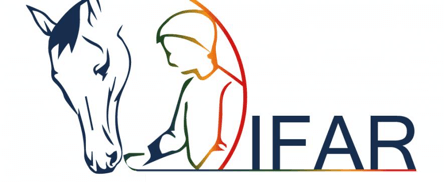The fourth International Forum for the Aftercare of Racehorses (IFAR), held February 20 as part of the Asian Racing Conference (ARC) in Cape Town, South Africa, featured presentations from representatives of four racing jurisdictions on their advancements in aftercare practices as well as discussions pertaining to the importance of developing effective aftercare programs.
The events were hosted by the Asian Racing Federation (ARF) and the ARC local organizing committee, consisting of Phumelela Gaming and Leisure, the Racing Association, Gold Circle Racing and Gaming Group, Kenilworth Racing, and The National Horseracing Authority of Southern Africa (NHA).
“Today’s presentations demonstrated the tremendous strides made by the global Thoroughbred industry to prioritize aftercare and establish programs to protect racehorses throughout their entire lives,” said Di Arbuthnot, the chair of IFAR and chief executive of Retraining of Racehorses (RoR). “We are thankful to the organizers of the Asian Racing Conference for recognizing the importance of aftercare and enabling IFAR to share our message with conference attendees.”
Arnold Hyde, racing control executive for the NHA, and Hazel Kayiya, racing admin executive of the Stud Book Department for the NHA, presented on South Africa’s aftercare policies. While the jurisdiction faces challenges due to factors such as economics and gaps in education and traceability, the NHA is making strides to address aftercare. For example, Hyde spoke on new rules written by the NHA to give owners responsibility for the welfare of racehorses throughout their entire lives, and Kayiya stated that the NHA is drafting rules to increase traceability through increased regulation of private auctions and sales.
Yoshimasa Takizawa, chief technical advisor of the Equestrian Affairs Division of the Japan Racing Association (JRA), talked about Japan’s progress in the aftercare arena. The JRA has launched a program that provides financial resources to farms that take care of retired racehorses and organizations that work to promote second careers for former racehorses. The Japanese program is modeled after the United Kingdom’s RoR and the United States’ Thoroughbred Aftercare Alliance. Takizawa noted the JRA’s commitment to supporting the use of retired racehorses in a diverse range of careers.
Dr. Jinkap Kim, chief manager of the Veterinary Regulation & Welfare team at the Korea Racing Authority’s (KRA) Veterinary Department, recounted the fallout from videos released by animal activists that documented former racehorses being treated cruelly at slaughterhouses. In an effort to enhance equine welfare, the KRA has expanded its Equine Welfare Committee, revised equine welfare guidelines, introduced equine welfare knowledge as components of qualification and licensing exams, and established a task force for retired racehorses.
Jennifer Hughes, the general manager for equine welfare for Racing Victoria, detailed Australia’s approach to aftercare, including categorizing former racehorses by their suitability to progress on to second careers and facilitating incentive-driven traceability programs to follow Thoroughbreds at all stages of their lives.
Roly Owers, chief executive of World Horse Welfare, offered his insights on the evolving welfare consciousness and proper welfare practices during the horse’s entire lifecycle, including the importance of euthanasia in certain situations. He discussed the social license of horse racing and the need for the racing industry to build trust with the public regarding the ethical treatment of horses that compete in racing.
“We have been doing some things for decades, but just because we have been doing them for decades doesn’t make them right,” said Owers. “If we don’t have a social license, we won’t be able to do business.”
Simon Cooper, the operations director for Weatherbys, detailed the importance of traceability at all stages of a racehorse’s life and how Weatherbys’ e-passport will help improve traceability from conception to death.
Dr. Eliot Forbes, an independent advisor to IFAR and the chief executive officer of AniMark Ltd., presented on the six strategies that comprise IFAR’s Aftercare Toolkit and the importance of an aftercare plan in the current climate of animal rights activism.
“We don’t need to bend to the will of activists, but we do need to make sure that we match the reasonable expectations of ordinary people,” said Forbes.
Arbuthnot kicked off the conference with an introduction of IFAR’s mission and progress since inception.
IFAR was previously held in conjunction with the European & Mediterranean Horseracing Federation’s General Assembly in Oslo, Norway, in May 2019; the Asian Racing Conference in Seoul, South Korea, in May 2018; and the Pan American Conference in Washington, D.C., in May 2017.
IFAR is an independent forum that recognizes geographical and industry differences among racing countries and is designed to enhance Thoroughbred aftercare worldwide. Working with the International Federation of Horseracing Authorities, IFAR will raise awareness of the importance of welfare for Thoroughbreds, improve education on lifetime care, and help increase demand for former racehorses in other equestrian sports. For more information on IFAR, visit internationalracehorseaftercare.com.
